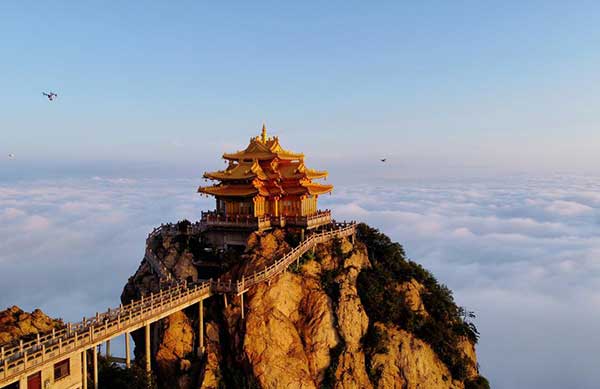Forgotten capital aims to revive past glory
 |
|
Scenery of Laojun Mountain, a sacred Taoist site in Luoyang city, Henan province.[Photo/Xinhua] |
Before the middle of the 10th century, the city of Luoyang was already a bustling metropolis - for half of its then 3,000-year-old history it had been the capital of some 13 dynasties.
However, despite being home to six UNESCO World Heritage sites, the city in Central China's Henan province is not as well known as its western peers like Athens and Rome. The modern city landscape gives few clues of its historic past.
The often forgotten capital has been overshadowed by Xi'an, known for its Terracotta Army. But Luoyang is planning to step out of the shadows and reclaim its former glory.
Construction began in June on a massive museum located at the site of ruins from the Xia Dynasty (2070-1600 BC), with the aim of recreating scenes from more than 3,000 years ago.
It will be called the Erlitou Relic Museum and is expected to be completed in October 2019. The museum will cover about 14 hectares and cost a total of 630 million yuan ($96 million) to build.
The Erlitou ruins were discovered in 1959 and have been identified by archaeologists as one of the capital cities during the Xia Dynasty.
China's earliest palace complex, bronze ware workshop and road network were all found there, said Zhao Haitao from the Chinese Academy of Social Sciences (CASS) Erlitou archaeological team.
The museum will include technology such as 3D and virtual reality to reproduce ancient scenes, Zhao said.














